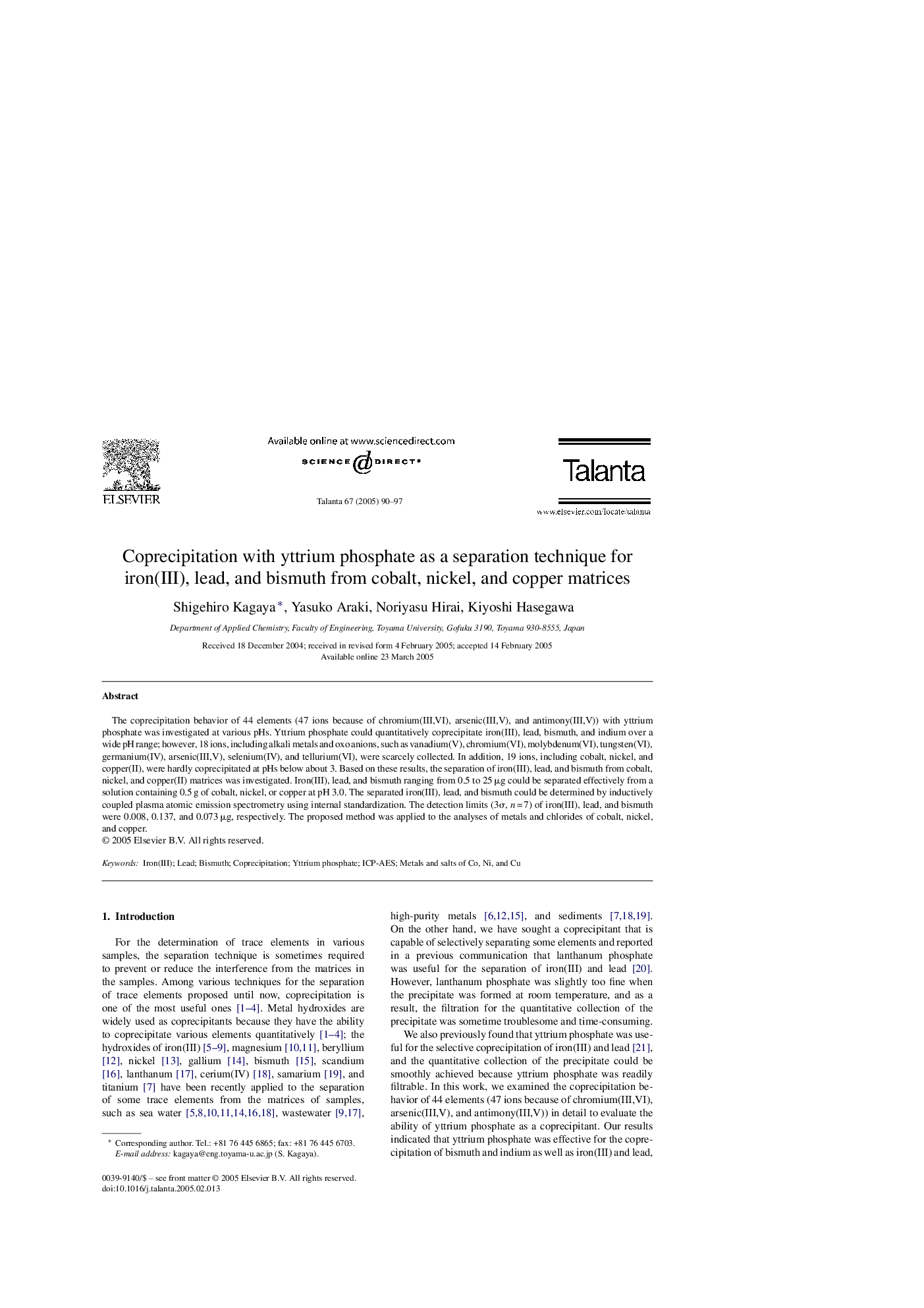| Article ID | Journal | Published Year | Pages | File Type |
|---|---|---|---|---|
| 10560815 | Talanta | 2005 | 8 Pages |
Abstract
The coprecipitation behavior of 44 elements (47 ions because of chromium(III,VI), arsenic(III,V), and antimony(III,V)) with yttrium phosphate was investigated at various pHs. Yttrium phosphate could quantitatively coprecipitate iron(III), lead, bismuth, and indium over a wide pH range; however, 18 ions, including alkali metals and oxo anions, such as vanadium(V), chromium(VI), molybdenum(VI), tungsten(VI), germanium(IV), arsenic(III,V), selenium(IV), and tellurium(VI), were scarcely collected. In addition, 19 ions, including cobalt, nickel, and copper(II), were hardly coprecipitated at pHs below about 3. Based on these results, the separation of iron(III), lead, and bismuth from cobalt, nickel, and copper(II) matrices was investigated. Iron(III), lead, and bismuth ranging from 0.5 to 25 μg could be separated effectively from a solution containing 0.5 g of cobalt, nickel, or copper at pH 3.0. The separated iron(III), lead, and bismuth could be determined by inductively coupled plasma atomic emission spectrometry using internal standardization. The detection limits (3Ï, n = 7) of iron(III), lead, and bismuth were 0.008, 0.137, and 0.073 μg, respectively. The proposed method was applied to the analyses of metals and chlorides of cobalt, nickel, and copper.
Related Topics
Physical Sciences and Engineering
Chemistry
Analytical Chemistry
Authors
Shigehiro Kagaya, Yasuko Araki, Noriyasu Hirai, Kiyoshi Hasegawa,
